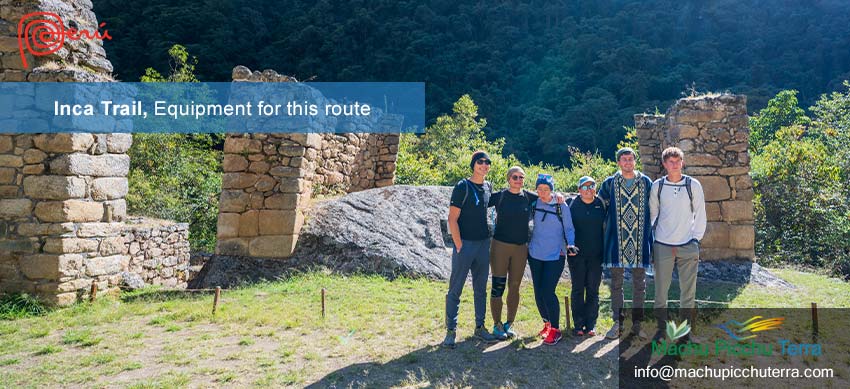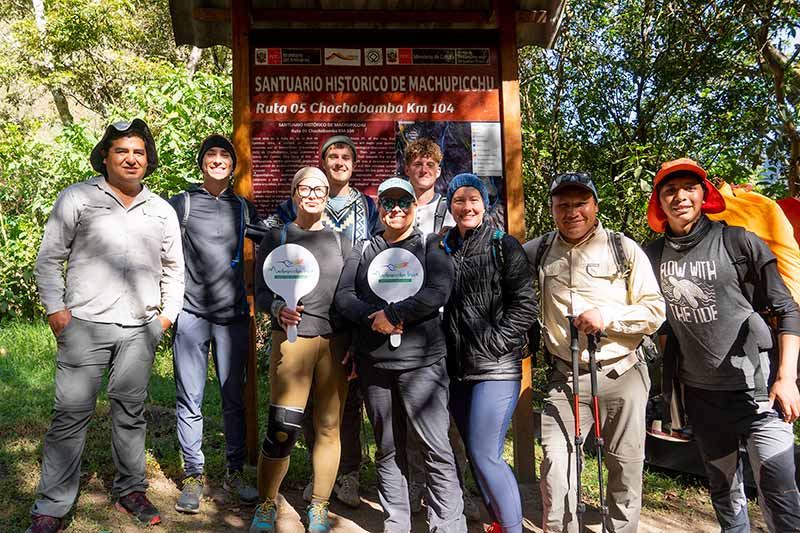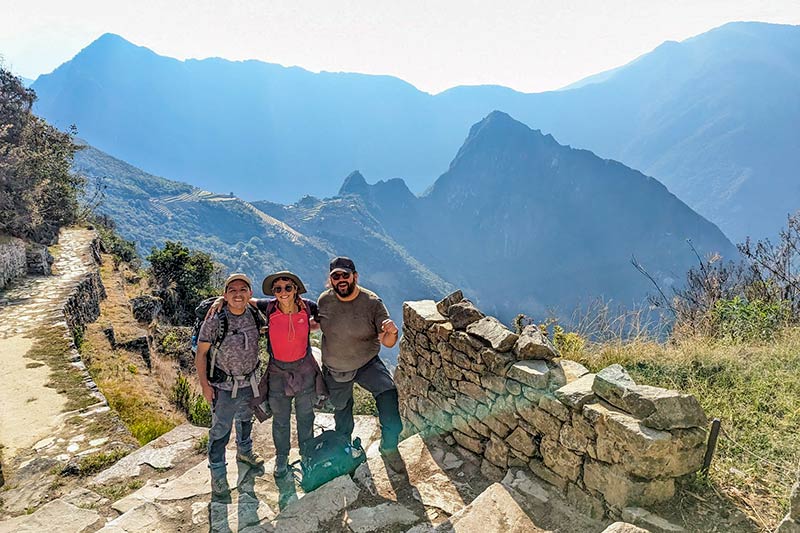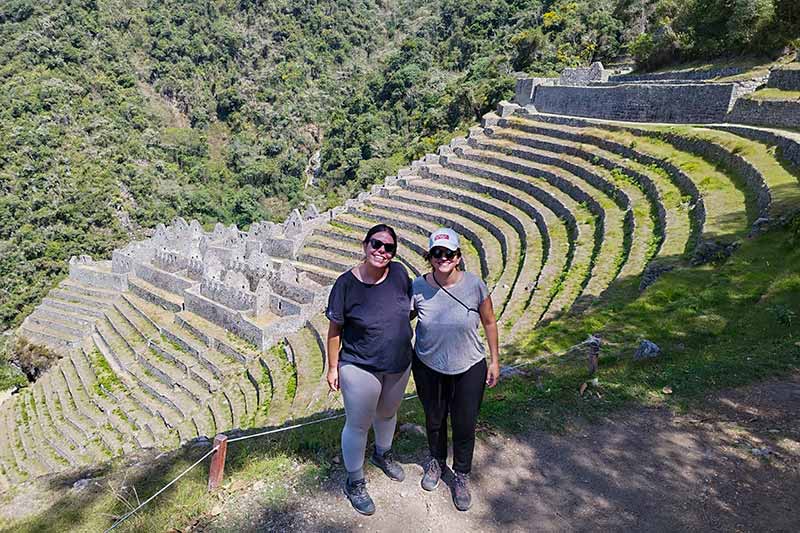
When trekking, it will be important to have equipment that allows a safe hike. Unfortunately, there is not much information about the necessary equipment to hike the route to Machu Picchu. This is often because the travel agency is in charge of informing or arranging the services and equipment necessary for the trek. In other cases, it is the experience of the participants themselves that provides everything necessary for this activity. In this sense, this article will try to explain the ideal equipment that allows safe and comfortable equipment for all the activities to be done on the way to Machu Picchu. Let’s begin.
The Inca Trail and other routes to Machu Picchu
The route of the Inca Trail to Machu Picchu comprises a path and stairway sections approximately 43 kilometers long. All this distance is covered in 4 days and the difficulty of the route is moderately high. Especially for factors such as the altitude, whose highest point is the Warmiwañuska sector about 4,200 meters above sea level. This usually generates some discomfort in people who do not achieve or make the necessary acclimatization. Further on, some difficulties may also be encountered in the sections of the stairs.
The Inca Trail to Machu Picchu is one of the most famous routes worldwide because it follows ancient trails that connected Inca villages and constructions. This is the case, for example, of the link between Wiñayhuayna and Machu Picchu. Along this route, the hiker will find himself between the highest Andean mountains and the passage to the high jungle. As one advances, little by little the entire geography is surrounded by abundant vegetation and a warmer climate.
Arrival at Machu Picchu on the 4-day Inca Trail is achieved on the fourth day at dawn. It is expected to see the sunrise from Inti Punku, a crucial point, both now and in the past. It seems to be a place of great importance because it was possibly a control point. In addition, today you can see one of the best views of all Machu Picchu.
The other trekking routes to Machu Picchu have similar routes. However, the Inca Trail is the only one that allows a tour of different archaeological centers that are traces of Inca constructions. This significantly increases the experience of the route itself. As for the other trekking routes to Machu Picchu, they have their charm because of the stretches and natural destinations that are crossed day by day. In any of the ways and possibilities to reach Machu Picchu by trekking routes, the experience will be unique. Each one of the stretches differs from the other considerably and if possible, those who have the opportunity can make each of the routes. Another aspect in which they also coincide is that they obey geographies that lead to the high jungle of Machu Picchu Pueblo in the province of Urubamba.
The geography of the place
When hiking any of the trekking routes to Machu Picchu, you can find a simile in that you will reach the high jungle of Cusco. This geographical space belongs to the cloud forests. These areas have the particularity of harboring great biodiversity, among which orchids and animals such as mammals and insects stand out. All the information about the place can be found in the Cloud Forest of Machu Picchu – The geography of Machu Picchu. For now, we can only mention that due to the particularity of this climate, equipment is required to think about the humidity and the probable rains.
On the other hand, due to the geography of the place, two seasons can be established. The first season is the dry season. This begins in April and lasts until November. From November onwards, the first rains of the season can be found. The rains appear more frequently in January and February, ceasing with a certain sporadic presence of rains in February. The basic equipment will depend and vary according to the season in which the trek to Machu Picchu is made.
Fortunately for some and to the regret of others, the trekking routes to Machu Picchu are quite frequent. This has made it possible for the routes to be safe and easy to locate and follow due to the presence of some signs. Of course, these signs will have less presence in the other trekking routes that do not involve the Inca Trail. In this sense, very sophisticated equipment will not be necessary at all. In addition, you can also count on the presence of a tour guide to make the route on foot with greater confidence.
Likewise, it is important to mention that in any of the routes you decide to make the journey on foot to Machu Picchu. The first few days you will walk through high altitude areas that even exceed 5200 meters above sea level. This is the case, for example, of the Salkantay route, a route in which you have to cross the entire Salkantay pass. As mentioned above, it would be advisable to have light clothing that can adequately maintain body heat. In case you decide to do the route on your own, which is not allowed during the Inca Trail. We recommend that you distribute well the weight of the backpack and food for each of the days.
What equipment is needed to cover this route?
The equipment to achieve any of the routes is not complicated. In this case, much will depend on the type of service you acquire or if you will do it on your own. It is at this point that we must emphasize that the routes with the denomination “Inca Trail” are regulated by the Ministry of Culture. Therefore, it can only be done with the support of a travel agency with the necessary license to cover the route. These agencies are usually in charge of all the basic equipment such as camping tents, food, a professional guide on the route, and even the presence of some personal hygiene implements.
However, the other routes can be done freely or independently. They do not have a control as in the previous case. However, you have to prioritize the entrance ticket to Machu Picchu with prudent anticipation. When doing these trekking routes independently, it will be like doing it to any other destination, in which the basic needs are prioritized as the place to spend the night and food. In this sense, we leave a small list of the necessary equipment to make a trekking route in Cusco on the way to Machu Picchu.
- Personal care and grooming – It is important to have adequate skin care and protection. Always use sunscreen and mosquito repellent.
- First aid – A disinfection and wound protection kit will be very helpful. Also, some medicines for altitude sickness, diarrhea, and general ailments.
- Additional clothing – The routes are done in a minimum of 3 days, even this can be extended to more days, depending on the capacity of each one.
- Fire – In case you travel independently, you can easily prepare some pre-cooked food. So you will need to have them available. It will also be necessary to have water, fruits, and nuts.
- Shelter and camping – It is also important to keep in mind that temperatures at altitude can drop considerably. Good camping will be required, especially during the first few days.
- Knife – This is a simple tool that can fit as a keychain in the backpack, but with great resources and different ways to use them during hiking routes.
- Flashlight or lamp – Indispensable tool to start activities early and even secure the tent if night falls.
- Route information or maps – It is important to be informed of the route. One option is to download the route on Google Maps. This will work equally well for all routes.
According to some studies, the weight of the backpack should not exceed one-third of the body weight of an adult person. However, in the case of long distances such as the route to Machu Picchu, it is recommended to carry an average weight between 8 and 10 kilograms. Only in this way will you be able to make the trip without overtaxing yourself. If you will make the trip this way, remember to exercise months before.
Tips and recommendations
When hiking routes, it is important to consult with an expert to receive first-hand recommendations. We will also leave some tips that can help you cover the route from the arrival in Cusco and the early start of the hike.
- When you arrive in Cusco you can acclimatize by doing some activities in the city.
- Try to have a simple diet during the first days.
- Make sure you take everything you need and only what you need. Overweight backpacking can be a problem in the long run.
- Do not do the route alone unless you already have experience. Try to do it accompanied to have help in case of any unforeseen event.
- It is important to have good nutrition and hydration both before and during the route.
- You can have water treatment equipment, it can be the cooker or chemical treatment.
- Inform yourself of the options and the routes that can be followed, before making a decision.
- Take pre-cooked and easy-to-consume food, such as energy bars and dried fruits and nuts.
- Try to always follow the trails.
- In case of encountering wild animals, avoid touching or disturbing them. Also, avoid feeding them.
- Try to have water for other uses.
By Inca Trail Machu Picchu - Last updated, 24-04-2024
Interested in the Inca Trail? Know more about Information Inca Trail!
- How to choose my hiking shoes and visit Machu Picchu?
- The Vilcanota River, vital for the Inca Trail and the Sacred Valley
- Inca Trail to Machu Picchu What should I expect from a travel agency?
- Are trekking sticks really necessary for the Inca Trail?
- Short Inca Trail – What archaeological sites are visited?
- Sustainability tips for the Inca Trail



